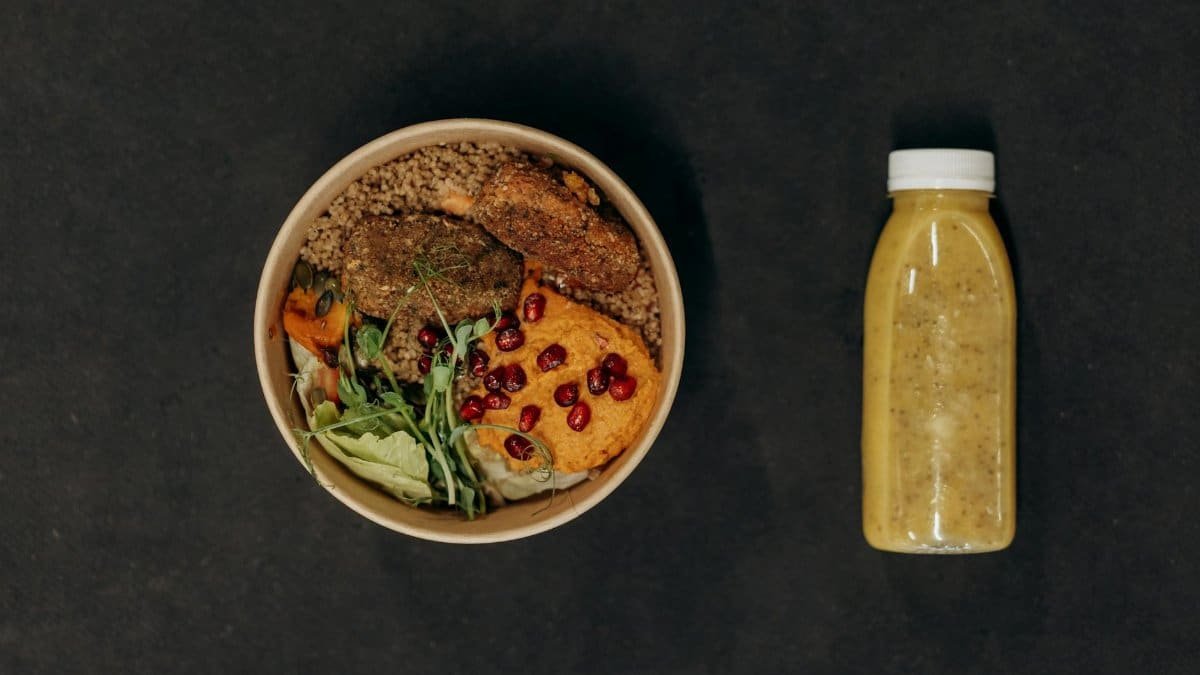Imagine a morning where the usual irritability and fatigue don’t show up. Instead, there’s a steady calm, a quiet focus that carries through the day. For many Americans wrestling with energy crashes and mood swings, this feels like a distant dream. Yet, a growing body of research—and everyday experience—suggests that what we eat can play a pivotal role in achieving this balance. The concept of using food to stabilize blood sugar and mood isn’t just a wellness trend; it’s a practical strategy grounded in science. By choosing specific nutrients and ingredients, it’s possible to smooth out the spikes and dips that often leave us feeling unsteady. This isn’t about drastic diets or impossible restrictions. It’s about simple, intentional choices. In this guide, we’ll break down 14 foods that can help anchor both body and mind, offering a path to more consistent energy and emotional resilience.
Why Blood Sugar Matters for Mood

Before diving into the foods themselves, it’s worth understanding the connection. Blood sugar, or glucose, is the body’s primary fuel source, especially for the brain. When levels spike and crash—often due to sugary snacks or refined carbs—the brain’s energy supply becomes erratic. This can trigger irritability, anxiety, or even brain fog. Research from institutions like the Harvard T.H. Chan School of Public Health highlights how stabilizing glucose levels can directly influence emotional well-being. It’s not just physical. A steady supply of energy helps regulate stress hormones like cortisol, which often amplify mood swings. So, the goal isn’t just avoiding hunger. It’s about creating a foundation where both body and mind can function without constant disruption. With that in mind, let’s turn to the foods that make this possible.
1. Oats: A Slow-Burn Energy Source

Start the day with a bowl of oatmeal, and you’re setting a solid tone. Oats are rich in complex carbohydrates, which break down gradually, providing a steady release of glucose into the bloodstream. This slow burn helps stabilize blood sugar and mood over hours, not minutes. A study summarized by the National Institutes of Health notes that whole grains like oats also contain B vitamins, which support brain health and stress reduction. Add a handful of berries or a drizzle of honey, and it’s not just functional—it’s comforting. Think of oats as the reliable friend who’s always there to keep things grounded.
2. Almonds: Crunch with a Calming Effect

Almonds pack a surprising punch for such a small snack. High in healthy fats, protein, and magnesium, they help regulate blood sugar while easing stress. Magnesium, in particular, has been linked to reduced anxiety in studies reported by the NIH. A small handful mid-afternoon can curb the urge for sugary pick-me-ups that often lead to crashes. Their portability makes them a practical choice for busy days—just toss some in a bag and go. It’s a simple way to keep energy and emotions in check without much effort.
3. Fatty Fish: Brain Food for Stability

Salmon, mackerel, and sardines aren’t just for heart health. These fatty fish are loaded with omega-3 fatty acids, which play a key role in brain function and mood regulation. Research from the Harvard Medical School suggests omega-3s can help reduce symptoms of depression and anxiety, partly by stabilizing blood sugar responses. Grill a salmon fillet for dinner, and you’re not just eating—you’re investing in a calmer state of mind. Even canned options work in a pinch for a quick lunch. The benefits linger well beyond the meal.
4. Sweet Potatoes: Nature’s Mood Booster

There’s a reason sweet potatoes often grace holiday tables—they feel like comfort. But beyond nostalgia, they’re a powerhouse of complex carbs and fiber, which help maintain even blood sugar levels. They’re also rich in vitamin B6, tied to serotonin production, a neurotransmitter that lifts mood. A baked sweet potato, lightly seasoned, can be a side or a standalone snack. It’s a reminder that stabilizing energy doesn’t mean sacrificing flavor. The slow, steady energy release keeps the highs and lows at bay.
5. Eggs: Protein-Packed Balance

Eggs are a breakfast staple for good reason. Their high protein content slows the absorption of glucose, preventing those sharp spikes and drops. They also contain choline, a nutrient linked to brain health and mood regulation. Whether scrambled, boiled, or poached, they’re versatile enough to fit any morning routine. Pair them with whole-grain toast, and you’ve got a balanced start that sets a stable tone for the day. It’s a small choice with outsized impact.
6. Lentils: A Fiber-Filled Anchor

Lentils might not scream excitement, but they’re a quiet hero. Packed with fiber and protein, they help control blood sugar by slowing digestion. They’re also a source of iron, which combats fatigue—a common mood killer. A hearty lentil soup on a chilly day doesn’t just warm the body; it steadies the mind. Toss them into salads or stews for an easy nutrient boost. They’re proof that simple ingredients can do heavy lifting.
7. Avocado: Creamy Calm in Every Bite

Avocado toast isn’t just a millennial cliché. The fruit’s healthy fats and fiber work together to keep blood sugar on an even keel. Plus, the potassium helps manage stress responses. Spread some on whole-grain bread or add slices to a salad. It’s a creamy, satisfying way to support both energy and emotions. One bite, and the day already feels a little smoother.
8. Blueberries: Small but Mighty Mood Helpers

Blueberries bring more than a burst of sweetness. Their antioxidants combat inflammation, which some research ties to mood disorders. They’re also low on the glycemic index, meaning they won’t send blood sugar soaring. Sprinkle them on yogurt or eat them by the handful. They’re a reminder that nature often packages stability in small, vibrant doses.
9. Greek Yogurt: Gut Health, Mind Health

The gut-brain connection is real, and Greek yogurt plays a part. Its probiotics support gut health, which emerging studies link to better mood regulation. The protein content also helps stabilize blood sugar. Add some nuts or fruit for texture, and it’s a snack that feels indulgent yet functional. It’s a small step toward balance that doesn’t feel like a chore.
10. Quinoa: A Grain with Staying Power

Quinoa’s reputation as a superfood isn’t hype. This grain offers a complete protein and plenty of fiber, both of which help manage glucose levels. It’s a solid base for bowls or salads, adaptable to any flavor profile. Swap it for rice in a stir-fry, and notice how the energy lasts. It’s a subtle shift with a steady payoff.
11. Dark Chocolate: A Sweet Stabilizer

Yes, chocolate can fit into a mood-friendly diet—if it’s dark. High in flavonoids, it may improve brain function and reduce stress, while a small amount of sugar offers a controlled lift. Opt for 70% cocoa or higher, and savor a square or two. It’s not about indulgence. It’s about a mindful treat that supports rather than sabotages.
12. Spinach: Green Energy for the Mind

Spinach and other leafy greens deliver magnesium and folate, nutrients tied to mood stability. They’re low in calories but high in fiber, helping to keep blood sugar steady. Sauté them as a side or blend into a smoothie. Either way, they’re an easy addition that bolsters both body and spirit without much fanfare.
13. Chickpeas: Versatile and Steadying

Chickpeas, whether roasted or in a stew, bring protein and fiber to the table. They slow glucose absorption, preventing mood-altering crashes. They’re also budget-friendly and endlessly adaptable—think hummus or salad toppers. One anonymous online account recently described feeling “finally in control” after adding chickpeas to daily meals, a sentiment that echoes the power of small dietary tweaks.
14. Walnuts: A Handful of Harmony

Walnuts wrap up this list with their omega-3s and antioxidants, supporting brain health and blood sugar control. They’re an easy snack or salad addition, offering crunch and calm in equal measure. A small serving can tide over hunger while keeping emotions on an even path. They’re a fitting final note—a reminder that balance often comes in unassuming packages.
These 14 foods aren’t a magic fix, but they’re a toolkit. Weaving them into daily meals can help stabilize blood sugar and mood in tangible ways. It’s not about perfection. It’s about consistency, about making choices that build resilience over time. Picture a busy parent juggling work and kids, finding a moment of calm with a handful of almonds, or a student powering through exams with a quinoa bowl. These aren’t hypothetical. They’re snapshots of how food can anchor us. In 2025, as stress and pace continue to challenge well-being, these simple bites offer a quiet rebellion—a way to reclaim steadiness, one meal at a time.
